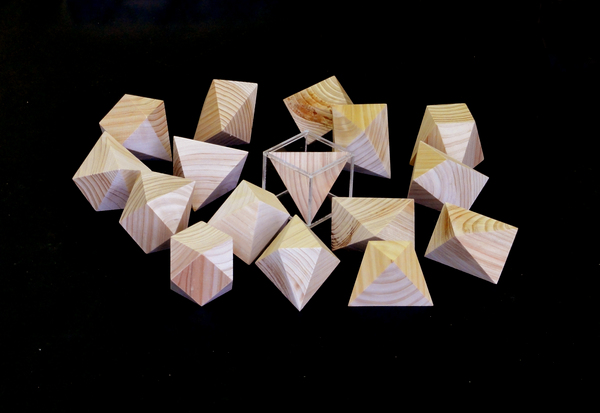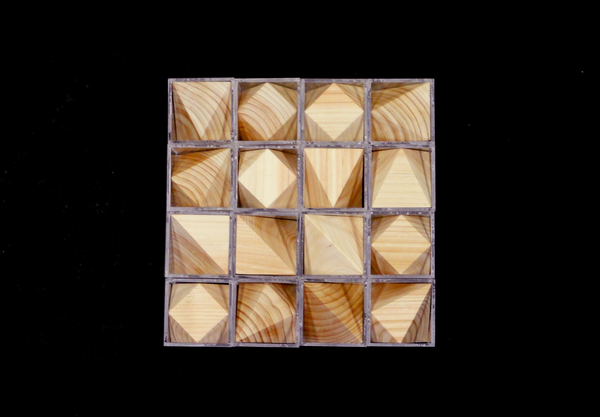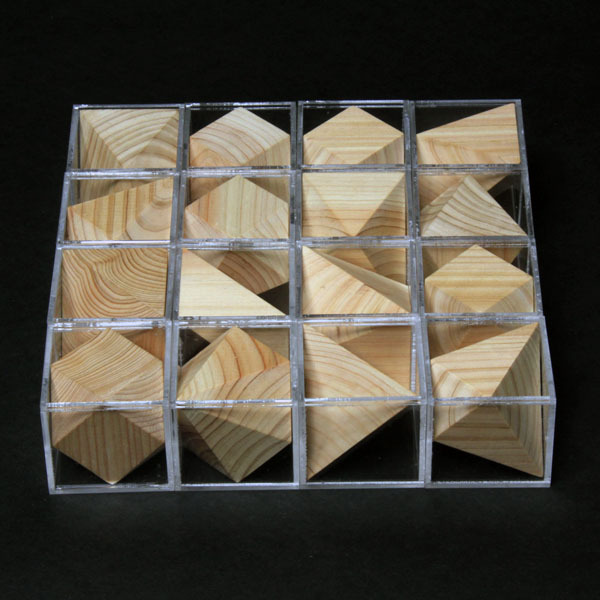It is
difficult to imagine that these polyhedra have this property if they
are looked at solely, but once each of them is put in an acrylic resin
box with one side open, one can easily see that it is an imaginary
cube just by looking at it from the faces of the box. It is a good
mathematical puzzle how to place imaginary cubes in a box.
|


|




